Online Class: Introduction to Programming for Professionals

no certificate
with CEU Certificate*
-
15Lessons
-
22Exams &
Assignments -
5Hours
average time -
0.5CEUs
Course Description
In a world where digital mastery is paramount, where the ability to harness technology can turn ideas into innovations, "Introduction to Programming for Professionals" stands as a beacon of opportunity. As technology evolves at an unprecedented pace, professionals across every industry are realizing the incredible advantage of understanding the language of code. Whether you're looking to pivot in your career, enhance your current professional toolkit, or simply indulge an unyielding curiosity, this course isn't just another line item on your to-do list—it's the key that unlocks the door to your future success.
Imagine walking into a room of technology experts and speaking their language fluently, confidently navigating the conversations that were previously outside your grasp. Picture yourself being able to conceptualize solutions with the agility of a seasoned developer, your newfound skills bridging the gap between complex ideas and seamless execution. This course is your path to growing beyond limitations, enabling you to articulate and realize your visions in ways you've only dreamed about.
Built with the professional in mind, "Introduction to Programming for Professionals" is more than a series of lessons—it's a journey of transformation. From the first moment, you're not just thrown into the technical depths; instead, you're accompanied on a narrative that guides you through the intricacies of modern programming. You'll begin with understanding the fundamental underpinnings of various programming languages, transforming those abstract concepts into meaningful, real-world applications. Our approach ensures that you don't just learn syntax and semantics, but that you truly grasp the heart and soul of programming languages, allowing you to apply them creatively and effectively.
This adventure doesn't stop at understanding the technical aspects; it's about the environment you thrive in. You'll decode the complexities of your coding environment, mastering the tools that professionals swear by, enabling faster, more efficient output. Beyond the mere act of writing code, you will learn to sculpt it, leveraging the power of functions and objects in ways that make your work stand out.
Control structures will no longer be just abstract notions—they will become your allies in devising sophisticated algorithms that you can apply immediately. As you learn, you will gain mastery over variables and data types, energizing your projects with dynamic, adaptable coding practices that lead to innovation and problem-solving excellence.
The journey continues into realms of powerful, practical knowledge in Object-Oriented Programming (OOP), where you're equipped to handle complex systems like never before. You'll walk away prepared to mold your code into objects that reflect real-world entities, ready to tackle challenges in AI, software development, and beyond with the confidence of a seasoned professional.
What sets this course apart is its commitment to not just fill your mind with information, but to inspire a real shift in how you see and interact with technology. From error-handling finesse to mastering data integrity, these teachings are designed to cultivate a mindset of innovation and resilience. You'll gain the strategies for harnessing SQL for strategic data operations, ensuring that your projects thrive in this data-driven era.
Finally, we believe that collaboration is key. You will dive into tools like Git and APIs which turn the solitary act of programming into a powerful collective endeavor, enhancing your capacity to contribute meaningfully in any team or project. And because we recognize the importance of lasting knowledge, you'll learn the craft of documentation, an essential skill for ensuring your work influences future generations of developers.
Ultimately, "Introduction to Programming for Professionals" promises a unique, engaging experience that is as enlightening as it is empowering. It's more than education; it's the development of a new professional superpower. When you're ready to take control of your future and elevate your career to extraordinary heights, this is your course. Start your journey with us today, and let's translate your aspirations into achievements.
- Completely Online
- Self-Paced
- 6 Months to Complete
- 24/7 Availability
- Start Anytime
- PC & Mac Compatible
- Android & iOS Friendly
- Accredited CEUs
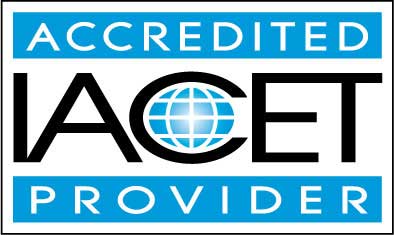
Course Lessons
Lesson 1. From Syntax to Semantics: Mastering Programming Languages
High-level programming languages like Python, Java, and C++ provide abstraction, focusing on real-world solutions rather than hardware intricacies. Conversely, low-level languages require detailed instructions but deliver superior control over hardware, essential for system-intensive operations.Lesson 2. Text Editors vs. IDEs: Decoding Your Coding Environment
Environment variables play a vital role in configuring software applications, offering a dynamic solution for customization and enhancing security by storing sensitive information outside the codebase. Managing these variables involves command-line skills and the ability to ensure variable persistence across sessions, making them indispensable in cloud and CI/CD environments.Lesson 3. Understanding Variables and Data Types in Modern Coding
The evolution of programming languages has shaped variable handling, from Python's dynamic versatility to Java's defined rigidity, underscoring the need for syntactical fluency in diverse programming environments. Mastery of variables empowers developers to innovate and resolve complex challenges, contributing significantly to tech advancements.Lesson 4. Programming Flow: The Art of Control Structures
In programming's evolving landscape, control structures underpin the successful implementation of complex algorithms in areas like AI and machine learning, crucial for applications such as autonomous vehicles. Mastery of these elements is highlighted by their role in navigating dynamic decision paths and is vital for career advancement in technology sectors.Lesson 5. Code Smartly with Functions: A Strategic Approach
Functions are the backbone of programming, allowing code to be organized into modular, reusable blocks that perform specific tasks efficiently. By breaking down complex problems into simpler functions, programmers can enhance readability, streamline debugging, and promote collaboration, ultimately boosting productivity and ensuring error-free execution.Lesson 6. The Pillars of OOP: Encapsulation, Inheritance, Polymorphism, and Abstraction
Object-Oriented Programming (OOP) empowers developers to tackle complex systems by modeling real-world entities as objects that encapsulate data and behaviors, providing a robust and versatile foundation. Through key principles like encapsulation, inheritance, polymorphism, and abstraction, OOP ensures code that is modular, maintainable, and scalable, infinitely adaptable to evolving requirements in industries ranging from software development to artificial intelligence.Lesson 7. Libraries vs. Frameworks: A Quick Overview
Libraries provide pre-written code that developers can selectively integrate, allowing for precise task execution and application flow control. Frameworks impose a specific architecture, guiding developers through a standardized development process to ensure consistency and scalability.Lesson 8. Error Handling in Programming: Insights and Techniques
Programming excellence comes from understanding hidden layers of errors such as syntax and semantic errors, along with runtime and logical pitfalls through detailed testing and debugging practices. Peer-to-peer collaboration cultivates accuracy and innovation, yielding error-free pursuits and reshaping programming errors into agility.Lesson 9. Ensuring Data Integrity through Efficient File Operations
Advanced operations encompass directory management and error handling, using built-in language libraries to organize files and handle exceptions gracefully. Such practices enhance automation, like configuring DevOps processes, and elevate software resilience by addressing failures in critical applications with proactive error management.Lesson 10. Harnessing the Power of SQL for Strategic Data Operations
Databases are organized through structures akin to spreadsheets, where tables hold systematic data, facilitating easy access and modification. By effectively utilizing columns and rows, organizations can streamline information retrieval, similar to a well-ordered library system that optimizes data integrity and accessibility.Lesson 11. Structure, Semantics, and Standards: The Essentials of HTML5
JavaScript transforms static web pages into interactive experiences, utilizing variables, functions, and event handling for dynamic content manipulation. Modern frameworks like React and Vue enable the creation of SPAs, driving seamless user interaction by leveraging JavaScript's evolving capabilities.Lesson 12. Git and Collaboration: Essential Tools for Developers
By facilitating distributed version control, Git empowers developers to work independently yet synchronize efforts globally, revolutionizing code collaboration. Its features, including branching and pull requests, nurture teamwork and robust project development while ensuring efficient code management and integration.Lesson 13. API Essentials: Uniting Software Systems Seamlessly
There are four main types of APIs: Open, Partner, Internal, and Composite, each serving unique purposes like fostering innovation or securing sensitive business interactions. When utilized with RESTful or SOAP structures, APIs ensure efficient data exchanges across complex systems, from microservices to cloud architectures.Lesson 14. Write It Down: Ensuring Code Longevity Through Documentation
Detailed code documentation is vital for adapting to technological changes, enabling smooth migrations while maintaining essential logic. Automated tools like Javadoc and Sphinx integrate seamlessly, building consistent and comprehensive knowledge resources.Lesson 15. The Art of Code Clarity: Building Bridges for Developers
Through design patterns and adherence to coding best practices, programmers can streamline their workflows while maintaining code flexibility. Such methodologies contribute to creating efficient, elegant software, essential for modern collaborative environments.
Learning Outcomes
- Demonstrate the ability to choose and explain suitable programming languages for specific tasks, highlighting the distinguishing features and benefits related to software development and efficiency.
- Define and differentiate between high-level and low-level programming languages, identifying specific use cases and advantages of each type.
- Define and compare the benefits of choosing a text editor versus an IDE for enhancing coding productivity.
- Demonstrate how environment variables can be configured to improve application security and maintenance across different deployment stages.
- Demonstrate the ability to perform data type conversions and understand variable scope and lifetime in various programming languages.
- Define and apply appropriate variable naming conventions to enhance code readability and maintainability in software development.
- Demonstrate the use of `if` statements and loops through practical examples to implement decision-making processes and repetitive tasks in software applications.
- Recognize the three primary types of control structures—sequential, selection, and iteration statements—and describe their roles in program logic.
- Define and demonstrate the creation and use of functions in programming to streamline code modularity and improve readability.
- Identify and apply parameter passing and return value mechanisms in functions to optimize data processing and application performance.
- Demonstrate the ability to implement encapsulation in a class by securely managing private attributes through public methods in an OOP context.
- Identify and describe the use of inheritance by creating a subclass that extends the properties and methods of a base class, ensuring code reusability and structure.
- Demonstrate understanding of differences between libraries and frameworks by accurately describing their roles in software development.
- Demonstrate mastery of lesson content at levels of 70% or higher.
Additional Course Information

- Document Your Lifelong Learning Achievements
- Earn an Official Certificate Documenting Course Hours and CEUs
- Verify Your Certificate with a Unique Serial Number Online
- View and Share Your Certificate Online or Download/Print as PDF
- Display Your Certificate on Your Resume and Promote Your Achievements Using Social Media

Choose Your Subscription Plan
No Certificate / No CEUs
This course only
| Includes certificate | X |
| Includes CEUs | X |
| Self-paced |

|
| Instructor support |

|
| Time to complete | 6 months |
| No. of courses | 1 course |
Certificate & CEUs
This course only
| Includes certificate |

|
| Includes CEUs |

|
| Self-paced |

|
| Instructor support |

|
| Time to complete | 6 months |
| No. of courses | 1 course |
Certificates & CEUs
Includes all 600+ courses
| Includes certificate |

|
| Includes CEUs |

|
| Self-paced |

|
| Instructor support |

|
| Time to complete | 12 Months |
| No. of courses | 600+ |
Certificates & CEUs
Includes all 600+ courses
| Includes certificate |

|
| Includes CEUs |

|
| Self-paced |

|
| Instructor support |

|
| Time to complete | 24 Months |
| No. of courses | 600+ |
Related Courses
-
 6 hours
0.6 CEUs
Beyond the Runway: Influencing Trends in Modern Luxury
+ More Info
6 hours
0.6 CEUs
Beyond the Runway: Influencing Trends in Modern Luxury
+ More Info
-
 4 hours
0.4 CEUs
Home Organization and Decluttering Techniques
+ More Info
4 hours
0.4 CEUs
Home Organization and Decluttering Techniques
+ More Info
-
 4 hours
0.4 CEUs
Time Management Mastery
+ More Info
4 hours
0.4 CEUs
Time Management Mastery
+ More Info
-
 7 hours
0.7 CEUs
Family Engagement and Support Strategies in Special Education
+ More Info
7 hours
0.7 CEUs
Family Engagement and Support Strategies in Special Education
+ More Info
-
 5 hours
0.5 CEUs
Intuitive Arts: Beyond the Five Senses
+ More Info
5 hours
0.5 CEUs
Intuitive Arts: Beyond the Five Senses
+ More Info
-
 7 hours
0.7 CEUs
Ethical Decision-Making for Educators
+ More Info
7 hours
0.7 CEUs
Ethical Decision-Making for Educators
+ More Info
-
 5 hours
0.5 CEUs
Mentoring and Coaching New Teachers
+ More Info
5 hours
0.5 CEUs
Mentoring and Coaching New Teachers
+ More Info
-
 7 hours
0.7 CEUs
Effective Communication Skills for Everyday Life
+ More Info
7 hours
0.7 CEUs
Effective Communication Skills for Everyday Life
+ More Info
-
 5 hours
0.5 CEUs
Engaging Families in the Educative Process
+ More Info
5 hours
0.5 CEUs
Engaging Families in the Educative Process
+ More Info
-
 4 hours
0.4 CEUs
Navigating Family Systems: A Path to Healthier Habits
+ More Info
4 hours
0.4 CEUs
Navigating Family Systems: A Path to Healthier Habits
+ More Info
-
 4 hours
0.4 CEUs
Implementing Project-Based Learning
+ More Info
4 hours
0.4 CEUs
Implementing Project-Based Learning
+ More Info
-
 4 hours
0.4 CEUs
Behavioral Interventions for Students with Asperger Syndrome
+ More Info
4 hours
0.4 CEUs
Behavioral Interventions for Students with Asperger Syndrome
+ More Info
-
 7 hours
0.7 CEUs
Assistive Technology for Vision and Hearing Impairments
+ More Info
7 hours
0.7 CEUs
Assistive Technology for Vision and Hearing Impairments
+ More Info
-
 7 hours
0.7 CEUs
Mindful Living in the Modern World
+ More Info
7 hours
0.7 CEUs
Mindful Living in the Modern World
+ More Info
-
 5 hours
0.5 CEUs
Childhood Trauma: Long-term Effects and Interventions
+ More Info
5 hours
0.5 CEUs
Childhood Trauma: Long-term Effects and Interventions
+ More Info
-
 3 hours
0.3 CEUs
Social Media Content Creation
+ More Info
3 hours
0.3 CEUs
Social Media Content Creation
+ More Info
-
 4 hours
0.4 CEUs
Astrology for Personal Growth
+ More Info
4 hours
0.4 CEUs
Astrology for Personal Growth
+ More Info
-
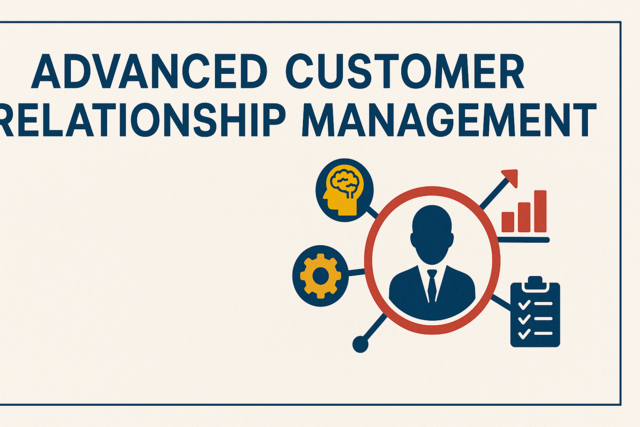 5 hours
0.5 CEUs
Advanced Customer Relationship Management
+ More Info
5 hours
0.5 CEUs
Advanced Customer Relationship Management
+ More Info
-
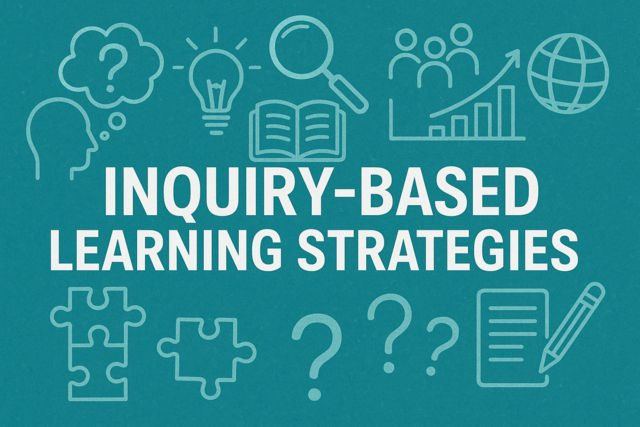 5 hours
0.5 CEUs
Inquiry-Based Learning Strategies
+ More Info
5 hours
0.5 CEUs
Inquiry-Based Learning Strategies
+ More Info
-
 7 hours
0.7 CEUs
Modern Mindfulness: Being Present in an Age of Distraction
+ More Info
7 hours
0.7 CEUs
Modern Mindfulness: Being Present in an Age of Distraction
+ More Info
-
 5 hours
0.5 CEUs
Developing a Growth Mindset
+ More Info
5 hours
0.5 CEUs
Developing a Growth Mindset
+ More Info
-
 4 hours
0.4 CEUs
Strategies for Teaching English Language Learners
+ More Info
4 hours
0.4 CEUs
Strategies for Teaching English Language Learners
+ More Info
-
 6 hours
0.6 CEUs
Fostering a Growth Mindset in Students
+ More Info
6 hours
0.6 CEUs
Fostering a Growth Mindset in Students
+ More Info
-
 4 hours
0.4 CEUs
Gamification in Education
+ More Info
4 hours
0.4 CEUs
Gamification in Education
+ More Info
-
 3 hours
0.3 CEUs
The Science of Happiness in Family Life
+ More Info
3 hours
0.3 CEUs
The Science of Happiness in Family Life
+ More Info
-
 6 hours
0.6 CEUs
Culturally Responsive Teaching in Special Education
+ More Info
6 hours
0.6 CEUs
Culturally Responsive Teaching in Special Education
+ More Info
-
 3 hours
0.3 CEUs
Team Building and Collaboration
+ More Info
3 hours
0.3 CEUs
Team Building and Collaboration
+ More Info
-
 6 hours
0.6 CEUs
The New Chic: Redefining Urban Elegance
+ More Info
6 hours
0.6 CEUs
The New Chic: Redefining Urban Elegance
+ More Info
-
 4 hours
0.4 CEUs
Leadership Skills for Emerging Leaders
+ More Info
4 hours
0.4 CEUs
Leadership Skills for Emerging Leaders
+ More Info
-
 7 hours
0.7 CEUs
Global Glam: International Perspectives on Modern Fashion
+ More Info
7 hours
0.7 CEUs
Global Glam: International Perspectives on Modern Fashion
+ More Info
-
 6 hours
0.6 CEUs
Digital Marketing Fundamentals
+ More Info
6 hours
0.6 CEUs
Digital Marketing Fundamentals
+ More Info
-
 4 hours
0.4 CEUs
Applying Creativity in Everyday Life
+ More Info
4 hours
0.4 CEUs
Applying Creativity in Everyday Life
+ More Info
-
 3 hours
0.3 CEUs
Essentials of Contract Negotiation
+ More Info
3 hours
0.3 CEUs
Essentials of Contract Negotiation
+ More Info
-
 5 hours
0.5 CEUs
Understanding Social Media for Business
+ More Info
5 hours
0.5 CEUs
Understanding Social Media for Business
+ More Info
-
 7 hours
0.7 CEUs
The Science of Miracles: When Logic Defies Understanding
+ More Info
7 hours
0.7 CEUs
The Science of Miracles: When Logic Defies Understanding
+ More Info
-
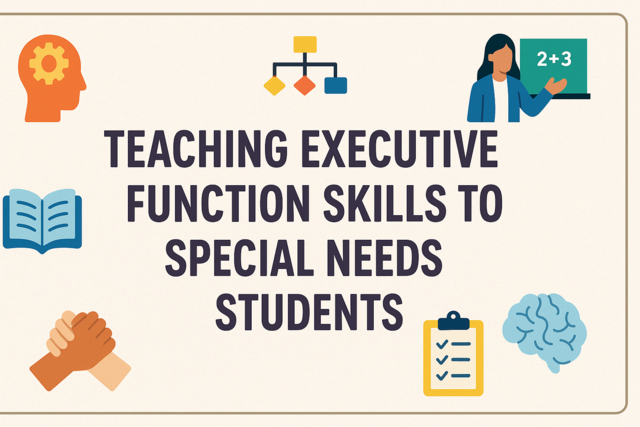 3 hours
0.3 CEUs
Teaching Executive Function Skills to Special Needs Students
+ More Info
3 hours
0.3 CEUs
Teaching Executive Function Skills to Special Needs Students
+ More Info
-
 4 hours
0.4 CEUs
The Use of Analytics in Education
+ More Info
4 hours
0.4 CEUs
The Use of Analytics in Education
+ More Info
-
 5 hours
0.5 CEUs
The Path to Healing: Integrated Approaches to Trauma Recovery
+ More Info
5 hours
0.5 CEUs
The Path to Healing: Integrated Approaches to Trauma Recovery
+ More Info
-
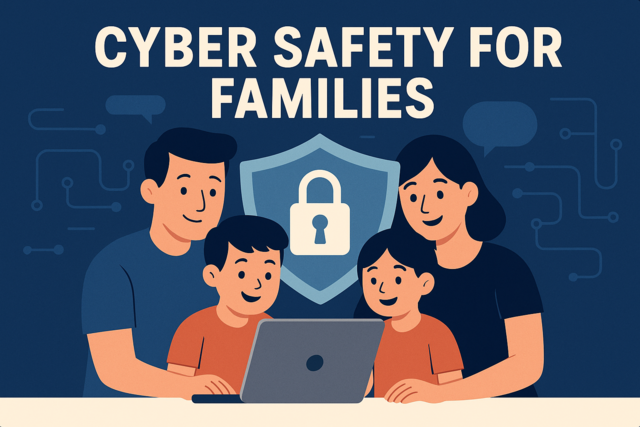 5 hours
0.5 CEUs
Cyber Safety for Families
+ More Info
5 hours
0.5 CEUs
Cyber Safety for Families
+ More Info
-
 3 hours
0.3 CEUs
Cybersecurity Basics for All
+ More Info
3 hours
0.3 CEUs
Cybersecurity Basics for All
+ More Info




